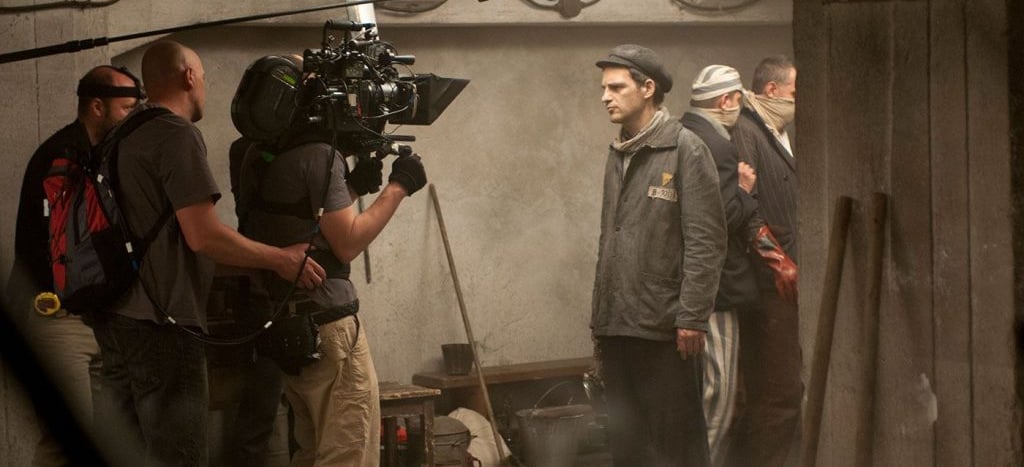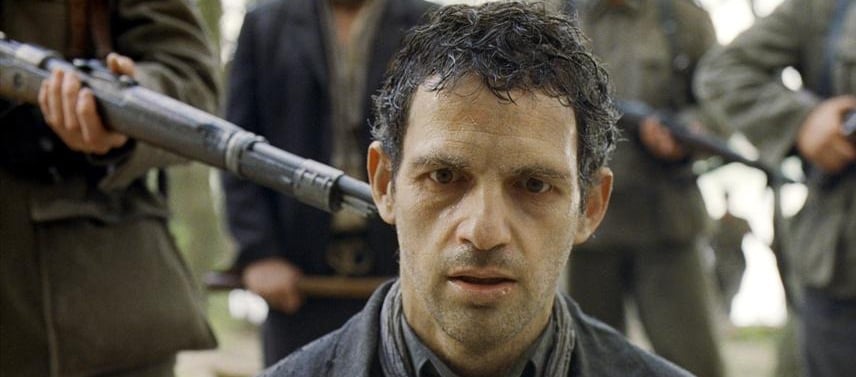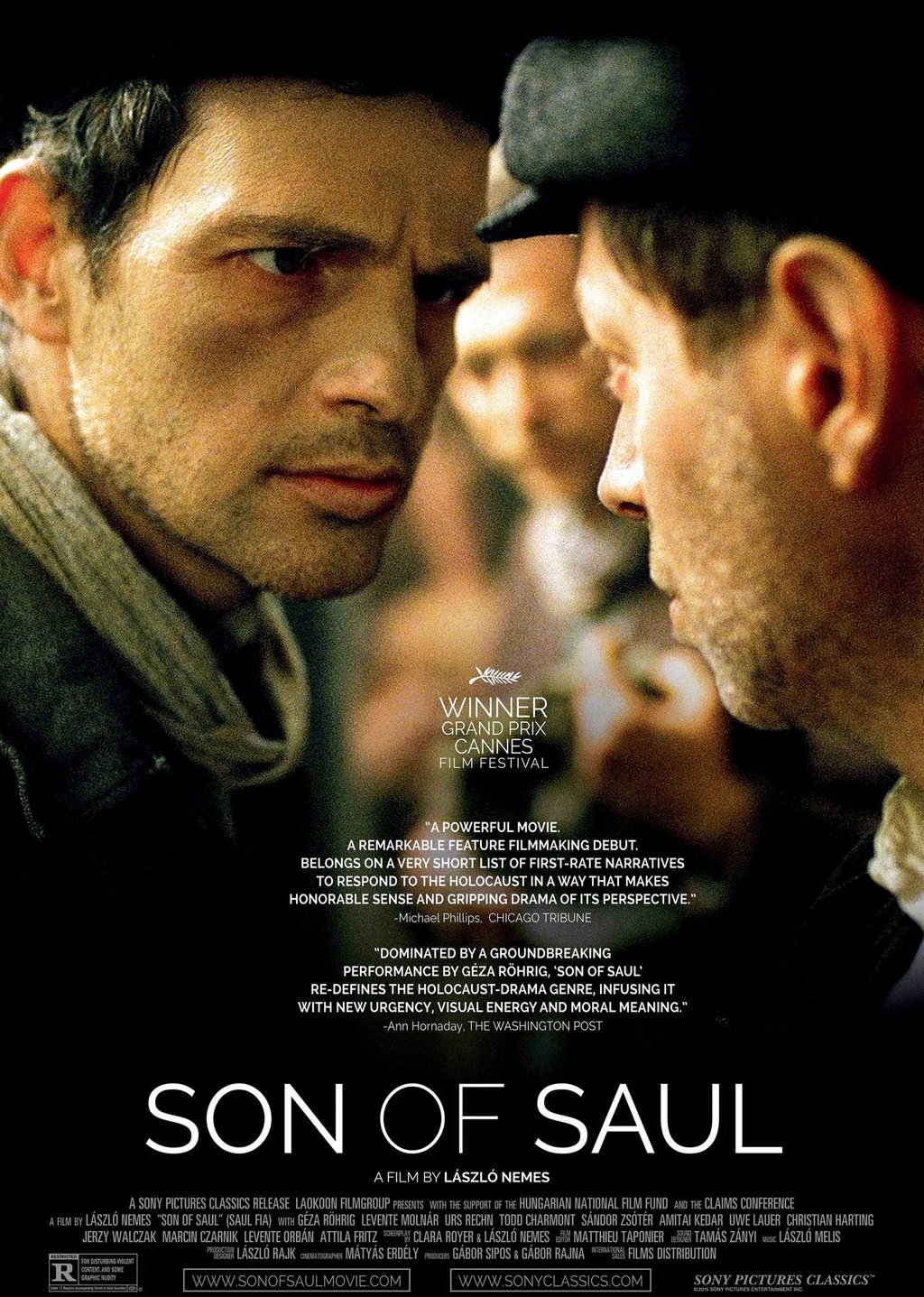Son of Saul
A harrowing, immersive journey through Auschwitz, where one man’s desperate act of humanity becomes an echo of memory and resistance.
A Portrait of Moral Obsession in the Crematoria
The opening frames of Son of Saul throw the audience directly into the tumult of Auschwitz in 1944. Here, Saul Ausländer, a Hungarian Jew and reluctant member of the Sonderkommando, must hustle corpses from the gas chambers as violence echoes around him. Instead of granting the film a panoramic scope, director László Nemes tightens the frame almost entirely on Saul, plunging the viewer into his focused psychological realm. Peripheral atrocities blur into noise and shadow as the camera tracks Saul’s tense breath, haunted eyes, and grinding gait. When Saul discovers the nearly living body of a boy after a gassing, he is consumed by a single imperative: to give the child a dignified burial. His obsessive devotion to this task supplants all other considerations—even participation in an uprising engineered by his fellow prisoners. From the moment he refuses to discard the boy’s body, the film evolves into a moral crucible, carefully calibrated through Saul’s narrowed will, quiet gestures, and a life-and-death contrast between survival and ritual.
Visual focus and narrative intensity set this film apart. While the wider camp throngs blur into a visceral gray, every glance Saul makes, every decision he makes under unbearable stress conveys the narrowing of consciousness. The world becomes a corridor of horror that he navigates with purpose. The cinematography from Mátyás Erdély uses a 40mm lens and Academy aspect ratio to flatten the world—a portrait-like, claustrophobic space where the camera becomes an extension of Saul’s mind. Sound designer Tamás Zányi adds layers of effect: disembodied laments, dripping water, muffled commands, and dragging bodies build a sensory pressure chamber. Dialogue is scarce; the film trusts emotion and movement to deliver meaning. As Saul’s search for a rabbi to recite Kaddish intensifies, the film becomes a spiritual odyssey under the unimaginable weight of genocide—an act of devotion that feels both radical and desperately necessary.
Critical Acclaim and International Recognition
Son of Saul’s reception was extraordinary from its festival debut through its awards sweep. The film premiered in competition at the 2015 Cannes Film Festival, where it won the Grand Prix, FIPRESCI Prize, François Chalais Award, and the technical Vulcan Award for Tamás Zányi’s sound design. It later became the first Hungarian film to win the Golden Globe for Best Foreign Language Film and only the second Hungarian film to win the Academy Award for Best Foreign Language Film—after Mephisto in 1981. Critics’ associations in San Francisco, Los Angeles, New York, and Chicago all recognized it as Best Foreign Language Film in 2015 and 2016. On Rotten Tomatoes it holds a 96% approval rating and is described as a “grimly intense yet thoroughly rewarding” cinematic experience.
Reviewers praised Géza Röhrig’s central performance: a poet turned actor whose face becomes the emotional locus of the film. His portrayal delivers quiet suffering, internalized grief, and an existential tether to identity. Critics have described the film as “rigorous, demanding and rewarding”—its pace unrelenting, yet never indulgent. While some argue it lacks the depth of Lanzmann’s Shoah—or that its stylistic choices prioritize strategy over experience—the majority place it among the defining Holocaust films of the 21st century, often stating that it “reigns in immediacy” and forges emotional connection like few others.
Where and How to Watch
Son of Saul, with its subtle and immersive intensity, is available on several on-demand platforms. In many regions, it is currently offered on Max (HBO) streaming service as part of its film catalog. For those wishing to rent or own, services including Amazon Video, Apple TV, and Fandango at Home offer both HD rental and purchase options, with audio tracks in Hungarian and English and runtime of approximately 107 minutes in Dolby-compatible formats. While it may be unavailable on Netflix in certain markets, local film libraries or specialty streaming services focusing on European cinema may host the film. Physical Blu-ray/DVD editions are distributed by Sony Pictures Classics, accompanied often by director interviews and making-of insights. Subtitles are widely available in English and other languages, and most distribution platforms ensure accessibility features like closed captions. Verified ratings indicate suitability only for adult audiences due to its unflinching depiction of violence, emotional fragility, and the process of systematic extermination.


Historical Realism Anchored by Dramatic Restraint
Son of Saul distinguishes itself through extraordinary research rigor and refusal to sensationalize. Set precisely in October 1944—after the arrival of Hungarian Jews triggered Auschwitz’s final phase—the film depicts a camp under siege, with death production accelerating and Sonderkommando facing imminent liquidation. Historical details are woven through the environment: signed numbers on uniforms, prisoners’ languages spoken authentically, uniforms of SS officers, and observed practices of corpse placement. Nemes and co-writer Clara Royer mined testimony and works such as The Scrolls of Auschwitz to ensure authenticity, while architectural design by László Rajk recreated the crematoria with uncanny precision. Yet these details serve a restrained aesthetic: viewers never witness the gas trails or loaded trains, only the aftermath in Saul’s world, where horror is felt through close-up labor rather than cinematic depiction. The effect is akin to chromatic minimalism: documentary accuracy reframed as subjective immediacy.
At the same time, the film builds a tapestry of historical resonance. The Sonderkommando uprising emerges not through overt heroism but through quiet defiance and strategic sabotage. Saul’s betrayal of that uprising is itself an act of ethical complexity—he trades space and cover for a few minutes to bury a child’s body. This collision of ideologies—religious duty versus armed revolt—becomes the film’s emotional heart. Critics have noted comparisons to Claude Lanzmann’s Shoah; while Lanzmann confronts the Holocaust through patient testimony, Nemes invites viewers into existential confusion through his character’s gaze. As The New Yorker has commented, Son of Saul both honors and diverges from Lanzmann’s legacy: it may lack the philosophical probing of Shoah, but it delivers an elemental immediacy of the Holocaust experience.






Awarded with the Highest Distinction
Son of Saul was selected for the Excellence Award for its unparalleled achievement in immersive filmmaking, moral focus, historical authenticity, and cinematic bravery. It is worth the journey not only because it represents a landmark of Holocaust cinema, but because it transforms witnessing into ethical engagement—reminding us that even in the darkest places, a small act of dignity can echo powerfully beyond screen and time.







